You keep your dog’s crate on hand so they have somewhere safe to rest. Which makes it frustrating to come home and find the crate destroyed. The expense of replacing the crate may get ridiculous. And then there’s the risk of your dog harming themselves. How to stop the process? If you’re at your wit’s end, it might be time to consider one of these indestructible dog crates.
The Need for Escape
With proper crate training, most dogs enjoy the time they spend in their crate. That designated space replicates the cave of their ancestry. It’s a source of safety and comfort. When ushered inside, they settle down for a nap or rest without a problem.
So what prompts other dogs to turn into the Hulk?
If your dog experiences high levels of anxiety, their crate may not provide the comfort they need. Instead, the confinement may increase their stress. You may need to reach for calming treats any time you leave them behind.
For others, outside stimulation through the windows can amp up their activity level. Squirrels, passing dogs, or even children playing may spark a need to join in. If your dog isn’t getting the playtime they require, they’ll dismantle their crate to get to the action.
Solving the Riddle
Before you purchase an indestructible dog crate, you need to figure out HOW your dog’s destroying their current crate. Not every dog powers through a crate in the same way. Indestructible dog crates feature different designs, and you’ll need to select a design that foils your dog’s particular methods.
Common escape plans include:
- Chewing: Wire crates use metal connectors at the corners and door. Your dog knows these are the weak points, and they’ll chew at them for a quick escape.
- Deft Paws: Some dogs are intelligent. They know the latch opens the crate. You might think it’s cute watching them bat at the door handle, but they’re deciphering the mechanism. Eventually, they puzzle out how it works.
- Going Hulk: Your dog doesn’t need to be a giant breed to muscle their way out. Even small dogs figure out how to bend bars and push free.
- Master of Trades: Then you have dogs that use a combination of tactics. These dogs need the MOST indestructible dog crates because they’ve learned ALL the tricks.
If you want to see which escape plan your dog’s employing, duck around a corner to spy. You may need to resort to a webcam if your dog catches wise. Once you know their preferred trick, you can figure out which indestructible dog crate will work best.
Thwarting Your Houdini
Investing in an indestructible dog crate is a big step. You’re looking at a much more substantial crate than you’ve had in the past. If you’re hesitating, you CAN attempt a few tricks to fortify your current crate.
- Reinforce all the metal seams with high-quality carabiners. Zip-ties, rope, and duct tape are too easy to chew (and represent possible foreign bodies). Solid metal presents a more difficult obstacle and may thwart your dog.
- Distract your dog with a chew-proof, SAFE toy while they’re in their crate. (Again, let’s avoid a foreign body situation) If they’re focusing on something besides escape, you won’t have to worry about crate destruction.
- Ensure your dog’s getting their FULL exercise needs. If they hit the crate tired, they won’t have the energy to bust out. Consider getting a tennis ball launcher to run your dog ragged.
- Look at where the crate sits. Is your dog freaking out over the view from the window? Or, on the flip side, are they going nuts because they CAN’T see? A simple change in scenery can make a big difference.
Choosing an Indestructible Dog Crate
You’ve run through the entire list of tips. Your dog’s still battering down the walls. You’re afraid they’ll injure themselves next time. It’s time to consider one of the indestructible dog crates on the market. That’s understandable. Before you buy a reinforced safe, though, consider the following features:
- Size: Indestructible dog crates need to follow the same sizing principle as any other crate. Your dog should have room to lay down, stand, turn around, and have four inches around them. Measure their height, width, and length, and then add TWO inches, just to be on the safe side.
- Mobility: We move our dog’s crates all the time. If nothing else, we need to vacuum under them from time to time. Indestructible dog crates tend to be on the heavy side. Consider finding a crate on casters to help you move it around. Just make sure there are locks so your dog doesn’t roll their new home around the room.
- Portability: Unless you’re planning to purchase more than one, consider a crate that folds. This way, you have a sturdy option you can take when traveling.
- Easy Cleaning: Indestructible dog crates with grated floors and removable trays are the easiest to clean.
- Durability: This is an indestructible dog crate, right? You want quality materials that will withstand your four-legged Hulk.
- Ventilation: Solid metal walls WILL resist strong dogs up to a point. However, they don’t allow for air circulation. Damp builds up, and you run the risk of bacterial infection. Weigh the odds CAREFULLY.
- Latch Placement: If your dog can reach that latch, you’re out of luck. Latch covers or latches inaccessible to your genius pup work the best.
The Best Indestructible Dog Crates
Dogs can cause themselves a lot of injuries breaking out of crates. Lacerations, foreign bodies (if they ingest any pieces), cracked or broken teeth, and even broken jaws. Unfortunately, explaining these risks to them doesn’t work so well. Providing an indestructible dog crate makes a better option. Just keep in mind: nothing is 100% indestructible. If your dog’s determined, they can find a way. Your best bet is figuring out your dog’s trigger and working to solve that problem.
Best Plastic Indestructible Dog Crates
For long-term crating, plastic indestructible dog crates are NOT a solution. They’re on the smaller side, and plastic doesn’t resist powerful jaws. However, when you’re traveling – by car or plane – plastic crates tend to work the best. Most airlines require this style of crate. They DO provide plenty of ventilation, and the latches tend to get trickier for dogs to manipulate (considering some humans have difficulty with them).
Aspen’s crate works well for travel. The halves secure with metal screws, well out of reach of your crafty canine. The latch requires firm pressure on the top and bottom to pop the door open. Your dog will have plenty of ventilation through every side. Most airlines approve the crate for cargo transportation, too.
Downsides? Your dog needs a relatively calm demeanor. If they have any strength level, they CAN shove through the front door, as the wires’ plastic housing will give under sufficient pressure. People also felt this plastic showed quality control problems, with some finding it brittle. Check yours carefully.
The Good
- Halves secured with metal screws
- Latch requires pressure from top and bottom
- Approved by most airlines for cargo transportation
The Bad
- Strong dogs can shove through front door
- Some problems with quality control on plastic
PetMate’s plastic indestructible dog crate provides a little more reinforcement. The ventilation grating all features steel wiring, restricting chewing. The metal screws securing the two halves remain out of reach of prying teeth. And that latch? Not only can your dog not reach it, but it’s also a pain in the neck for humans to open (I’ll personally vouch for that). PetMate even includes a handy ID sticker, two “Live Animal” stickers, and a clip-on food and water bowl, perfect for travel.
The downsides? This is honestly meant as a travel crate. It’s not designed for home use. A strong dog WILL push the door out, given enough time. Also, while they claim the screws are rust-proof, they do rust and become impossible to remove if you leave the crate out in the elements.
The Good
- Steel wiring on ventilation grates
- Latch remains out of reach
- Approved by most airlines for cargo transportation
- Includes "Live Animal" stickers and clip-on food and water bowls
The Bad
- Not intended for home use
- Screws rust when left outdoors
Best Steel Indestructible Dog Crates
Steel resists teeth where plastic does not. If your dog chews through ordinary crates like they’re a snack, it’s time to upgrade to a steel indestructible dog crate. Steel holds up against prying teeth, and stronger welds prevent scratching nails from gaining purchase. Your dog may still attempt an escape, but the odds of destruction go down.
You’re at your wit’s end. Your dog has escaped from everything you’ve thrown at them. It’s time to consider Impact. Impact’s indestructible dog crates feature SOLID metal sides. The hardware used to secure the crates is identical to that used for cases that hold missile and satellite equipment. (If they hold up under those conditions, your dog should find them a significant challenge!) You can choose from multiple colors, and they come in a range of sizes.
Downsides? These indestructible dog crates are EXPENSIVE! You also need to assemble them, which may or may not get challenging. And those solid metal walls don’t provide the best ventilation. Please be careful about how long your dog spends in the crate.
The Good
- Solid metal sides secured with missile-strength hardware
- Range of sizes available
The Bad
- Expensive
- Assembly required
- Poor ventilation
If you have a lot of open space, Lucky Dog provides an unusual option. This steel wireframe also assembles without the need for any tools (who doesn’t love that?). You can add a lock to the latch, thwarting your crafty dog in their escape attempts. Your dog gets plenty of room to move, and there’s no question of the ventilation.
The downsides? This crate’s designed for outdoor use, so it doesn’t come with a floor. You’ll need to come up with a solution there. You also need to find a way to anchor the crate to prevent heavier dogs from tipping it over.
The Good
- Steel wire frame assembles without tools
- Easy to add lock to the latch
- Plenty of ventilation
The Bad
- Doesn't come with a floor
- Need to anchor sides to prevent tipping
MidWest provides an indestructible dog crate for those canines that haven’t achieved full Hulk just yet. The sturdy wire frame sets up without the need for any tools, allowing anyone to install the crate. If you wish, you can use a divider, add on casters to make movement from room to room easy, or even carry it with a handle (assuming you buy a smaller size). The entire crate collapses down for easy portability or storage. A slide-out tray makes cleaning a cinch.
We have this crate, and it’s fantastic. It works whenever we travel, and even at the size of our Greyhound, it isn’t horrific to move on cleaning day. She’s not a destructive dog, but it’s survived numerous trips in the car.
So what’s the downside? A determined chewer will go through the wire or seams in no time. If your dog isn’t terribly destructive, though, this is an option to consider.
The Good
- Wire frame assembles without tools
- Collapses for storage or portability
- Slide-out tray for easy cleaning
The Bad
- Determined chewers can bite through wire
If your dog’s on the Hulk side, it’s time to move up to the ProSelect. This indestructible dog crate features 20-gauge steel reinforced with 1/2-inch steel tubes. That’ll hold up against the strongest dogs! The grated floor and removable trays make cleaning easy for you. You can also attach casters to allow you to move the crate around the house, as you need.
Downsides? This is one of the pricier indestructible dog crates on the market. The latch isn’t out of reach of your dog, and it’s relatively simple to manipulate. And the wheels tend to fall apart, so be careful when moving your crate around.
The Good
- 20-gauge steel reinforced with 1/2-inch steel tubes
- Grated floor and removable tray for easy cleaning
- Attachable casters for easy portability
The Bad
- Expensive
- Latch within dog's reach
- Wheels fall apart easily
SmithBuilt offers another indestructible dog crate crafted from reinforced steel tubes. Their 20-gauge steel frame sits within 1/2-inch steel tubes with multiple hammer-tone coating layers to prevent rust and corrosion. Combined with the casters, this lets you move the crate inside OR outside. You also have locks on two of the wheels, preventing the crate from shifting when your dog spins around inside. The grated bottom features trays underneath to help with cleaning, and each tray has a lip around the edge to prevent leaks.
The downsides? Those casters are plastic, so, again, they tend to break. The bars along each side AREN’T welded to the frame, which is how some dogs have managed to break out. Keep an eye on your little Hulk.
The Good
- 20-gauge steel reinforced with 1/2-inch steel tubes
- Multiple hammer-tone coating to prevent rust
- Grated floor and removable tray for easy cleaning
- Attachable casters with locks on two of the wheels
The Bad
- Bars aren't welded to frame
- Wheels fall apart easily
“Light’s Getting Low”
Replacing crate after crate gets expensive. It doesn’t compare to the panic you endure wondering if this is the day your dog injures themselves. You don’t want to label your dog a menace, but reaching for an indestructible dog crate solves both problems.
So take a look at how your Houdini operates. Then figure out which crate works for you. You’ll breathe easier, and you’ll protect your dog. It’s the best of both worlds.

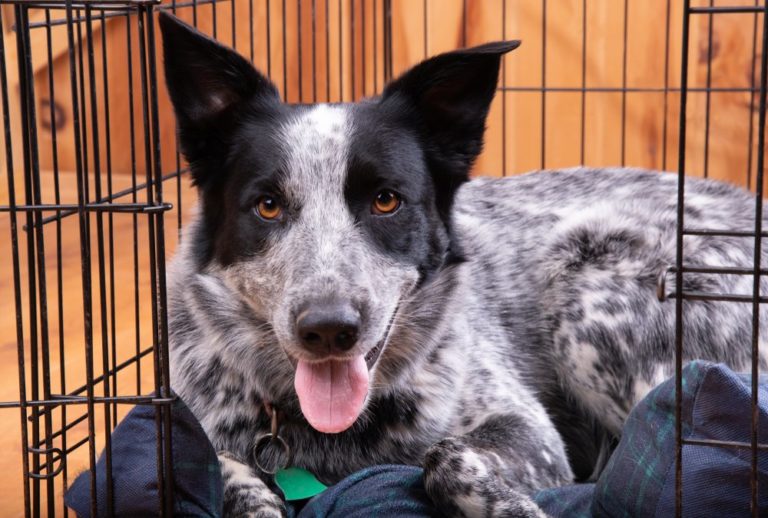
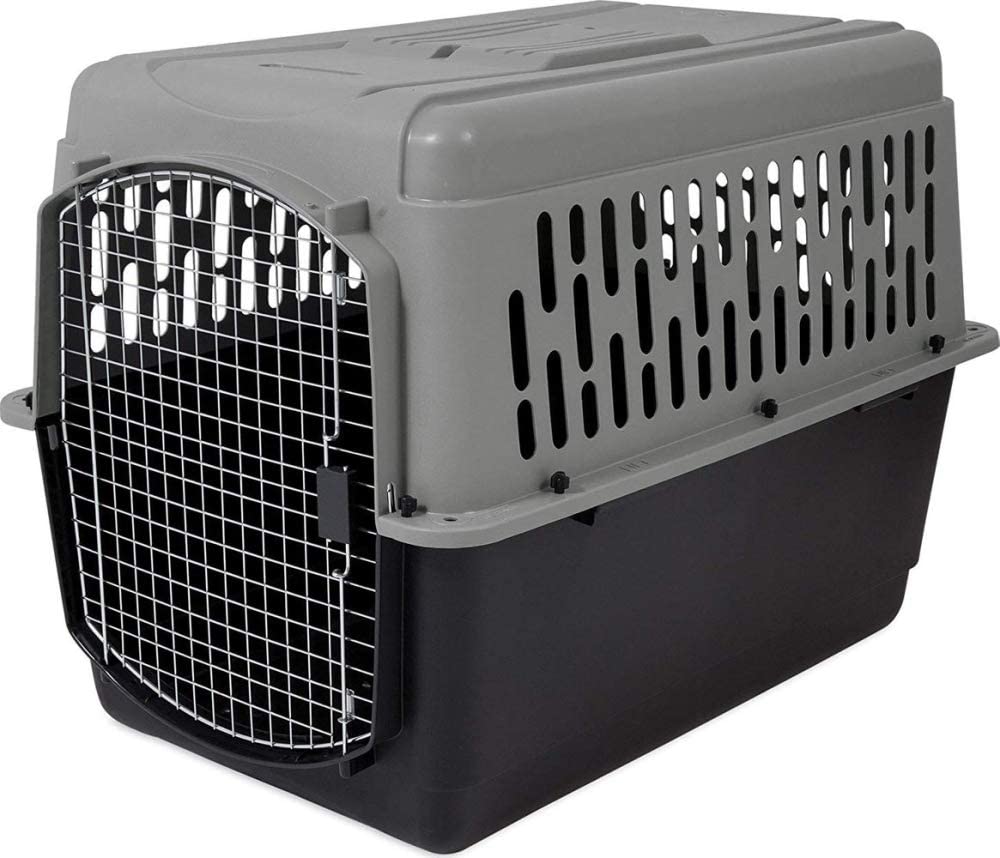
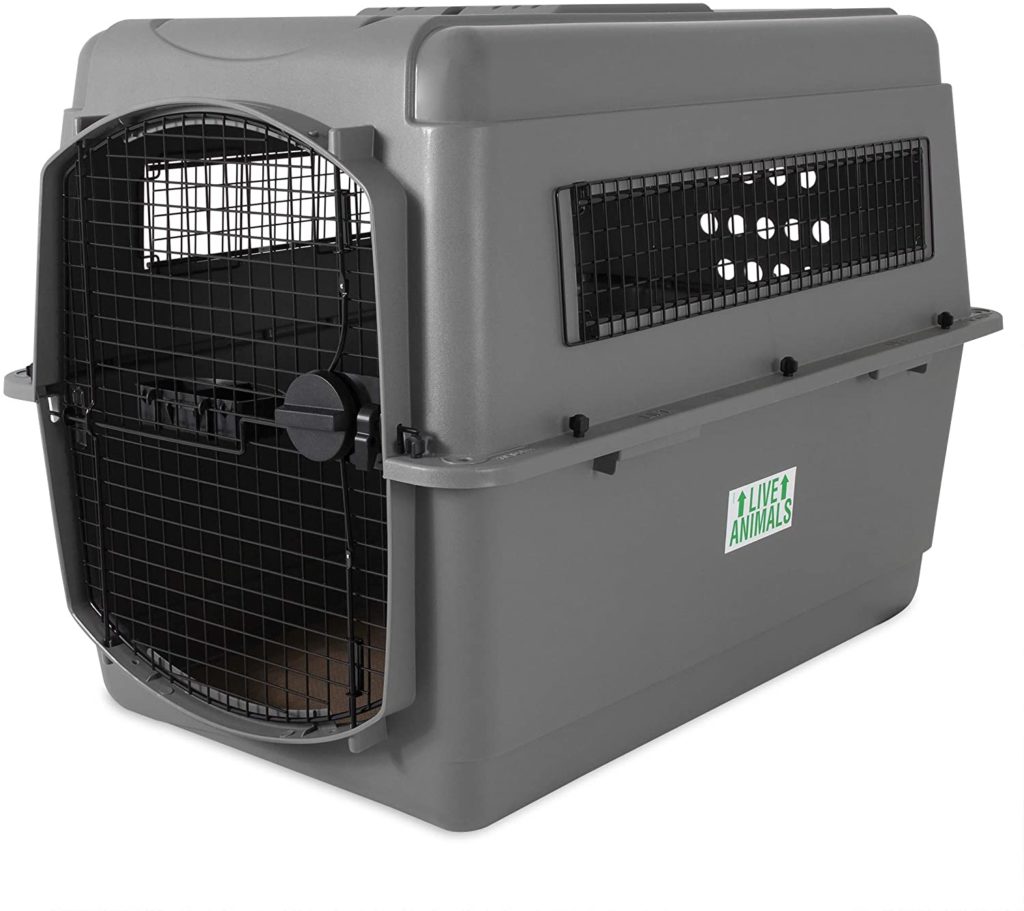

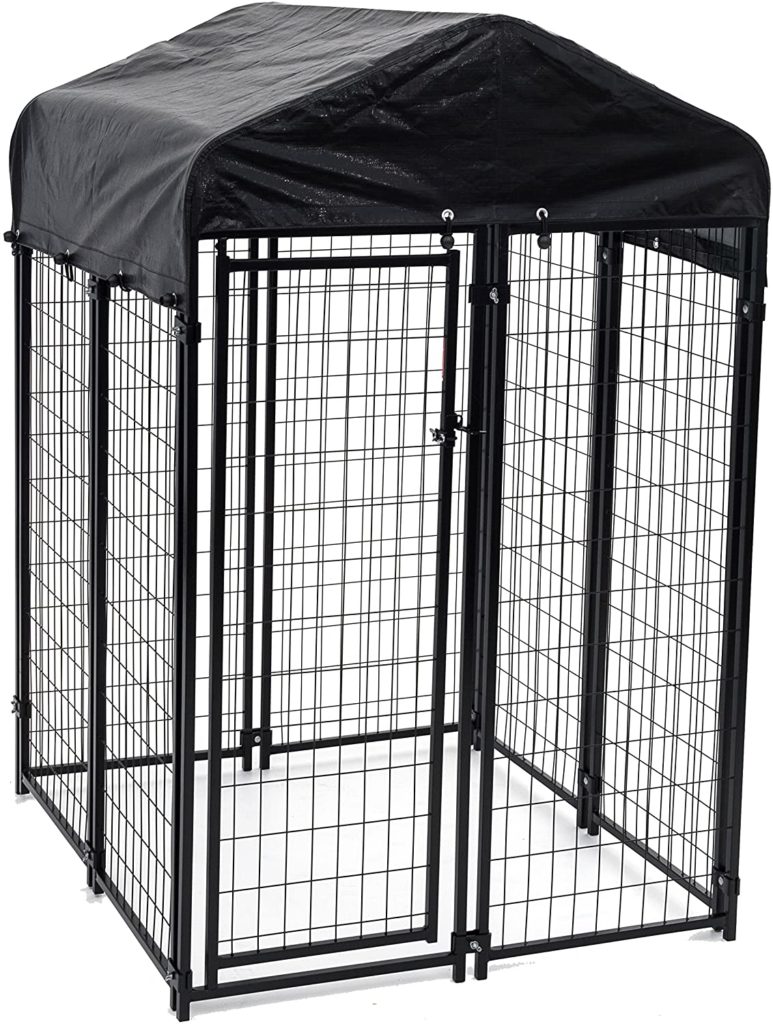
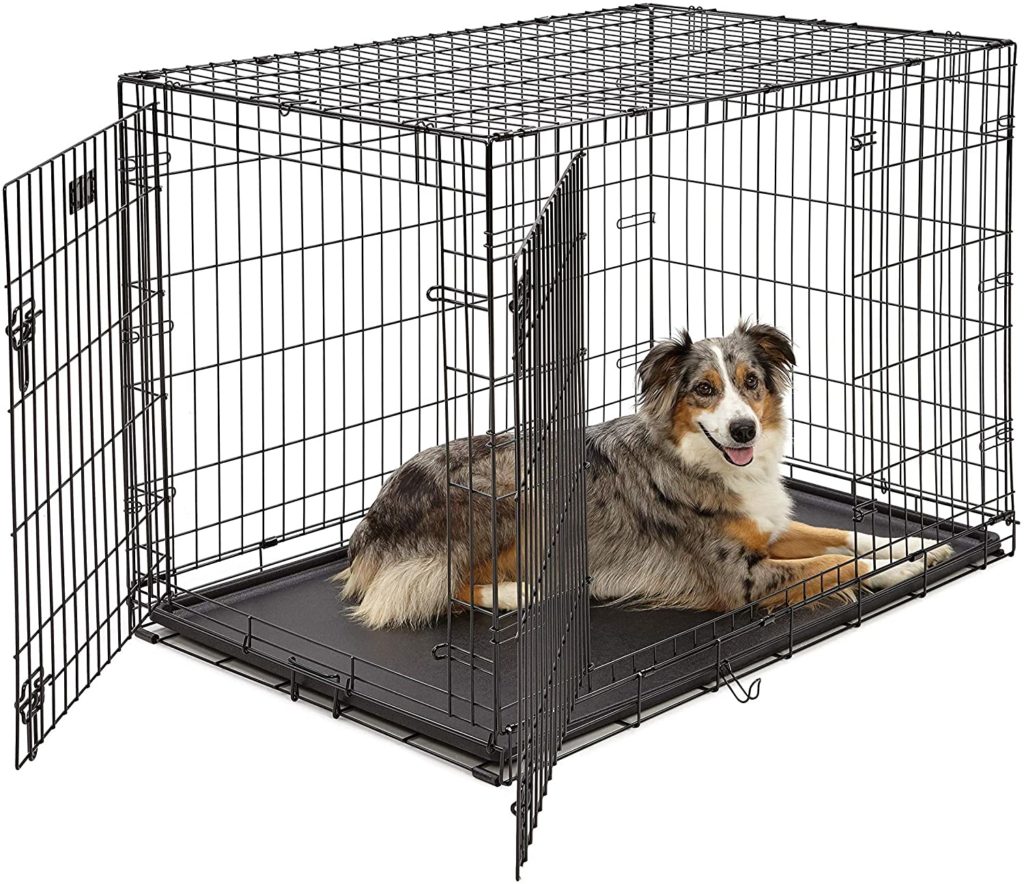
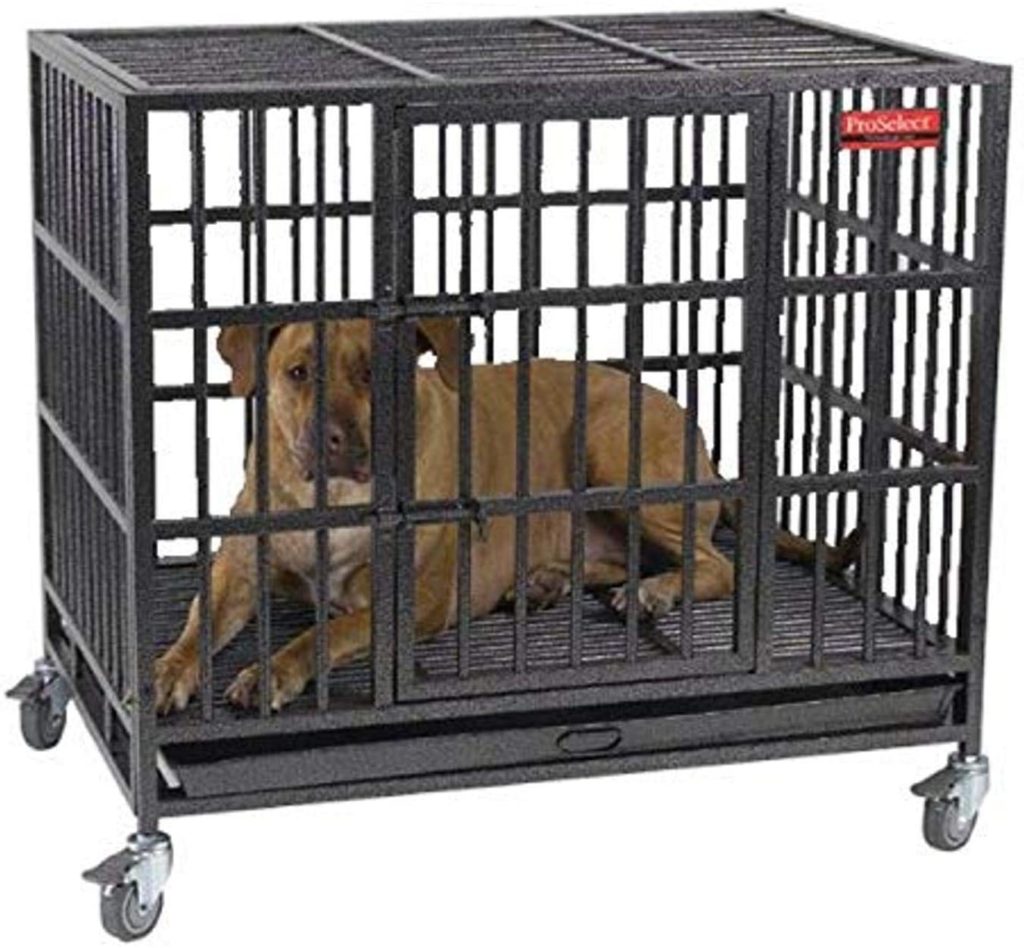
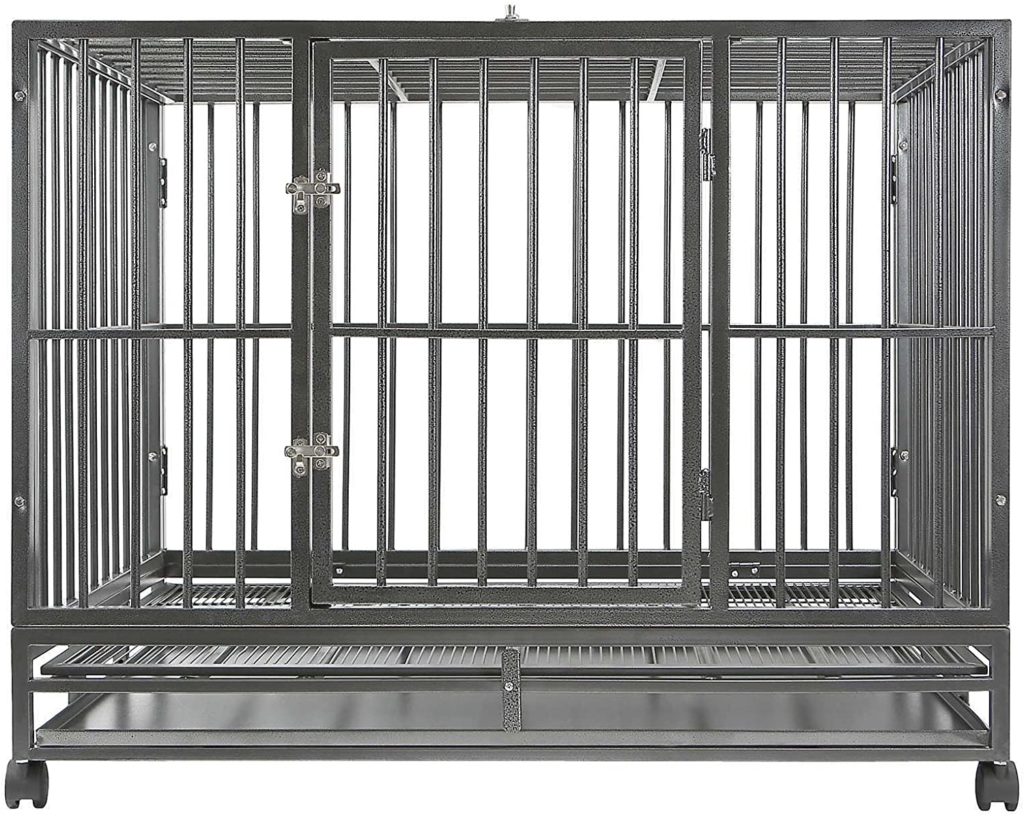




No comment yet, add your voice below!